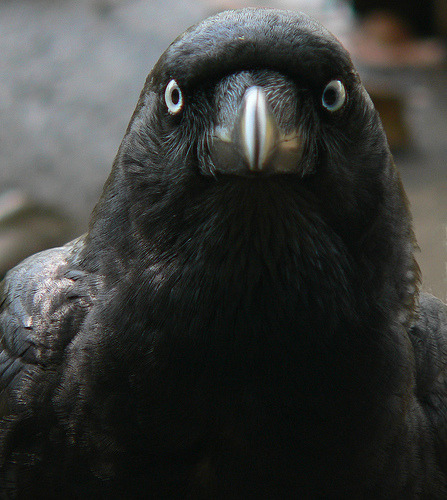 |
Big brains, but all they
want to talk about is mackerel. |
(Discover Magazine, Sept, 11, 2012) - Every whale and dolphin evolved from a deer-like animal with
slender, hoofed legs, which lived between 53 and 56 million years ago.
Over
time, these ancestral creatures became more streamlined, and their tails
widened into flukes. They lost their hind limbs, and their front ones became
paddles. And they became smarter. Today, whales and dolphins – collectively
known as cetaceans – are among the most intelligent of mammals, with smarts
that rival our own primate relatives.
Now, Shixia Xu from Nanjing Normal University has found that
a gene called ASPM seems to have played an important role in the evolution of
cetacean brains. The gene shows clear signatures of adaptive change at two
points in history, when the brains of some cetaceans ballooned in size. But
ASPM has also been linked to the evolution of bigger brains in another branch
of the mammal family tree – ours. It went through similar bursts of accelerated
evolution in the great apes, and especially in our own ancestors after they
split away from chimpanzees.
It seems that both primates and cetaceans—the intellectual
heavyweights of the animal world—could owe our bulging brains to changes in the
same gene. “It’s a significant result,” says Michael McGowen, who studies the
genetic evolution of whales at Wayne State University. “The work on ASPM shows
clear evidence of adaptive evolution, and adds to the growing evidence of
convergence between primates and cetaceans from a molecular perspective.”
For decades, we’ve known that similarities between primate
and cetacean intelligence run deep. For a start, both groups have members with
unusually big brains. We humans have brains that are 7 times bigger than you’d
expect for an animal of their size. The equivalent number is 2-3 for chimps and
some monkeys, and 4-5 for some dolphins.
Over the last decade, scientists have identified seven genes
that are linked to primate brain size. They’re called MCPH1 to MCPH7 (ASPM is
the fifth in the line). Faults in these genes can lead to microcephaly – a
developmental disorder characterised by a debilitatingly small brain.
McGowen had already shown that, unlike in humans, MCPH1
doesn’t neatly correlate with brain size in cetaceans. Xu wanted to see if ASPM
would be more interesting. He sequenced the gene in fourteen species of
cetaceans, from the bottlenose dolphin to the minke whale. He then compared
these to known sequences from 18 other mammals, including several primates and
the hippopotamus (the closest living relative to cetaceans).
Xu found that ASPM went through two periods of strong
positive selection – where beneficial new versions of the gene spread through a
population. The first coincides with the point when toothed whales (like sperm
whale and dolphins) split away from the baleen whales (like blue, fin and
humpback whales). Their brains got bigger. The second period marks the split of
the toothed whales into the delphinoids (including all oceanic dolphins and
porpoises) and all the others. The delphinoids’ already big brains got bigger
still.
Xu also found signatures of positive selection within the
ASPM genes of primates, but not in any other mammal groups. During their
history, both groups must have experienced some evolutionary pressures that
meant bigger brains suddenly became advantageous. We can only speculate what
these might have been. For cetaceans, the toothed whales evolved to navigate
with echolocation, and may have needed a larger brain to process the
information from all the returning echoes. The delphinoids may owe their larger
brains to the mental demands of living in large, complex social groups. (Both
hypotheses have been on the cards for some time, and Xu’s ASPM discovery
doesn’t provide a smoking gun for either.)
What does ASPM actually do? The gene is activated in neuroblasts,
the embryonic cells that eventually divide into neurons. It helps to create
structures in dividing cells that send a full complement of DNA into each
daughter. If ASPM isn’t working properly, the neuroblasts cannot divide evenly,
and brains get smaller. It’s not clear how the reverse happens – how changes in
ASPM lead to bigger brains, but it’s now clear that this has happened in at
least two mammal groups.
Xu found certain mutations that were associated with the
bigger brains of toothed whales, and others that are associated with the even
bigger brains of delphinoids. What these mutations did is anyone’s guess, and
something that will take a lot of experimental work to uncover.
Here’s one critical nugget, though: they’re different to the
changes you see in primates. The same gene may have enlarged the brains of both
groups, but it did so in different ways. And undoubtedly, other genes were also
involved.
(To close, here’s possibly my favourite ever example of
convergent evolution, which also involves cetaceans. Toothed whales and some
bats both use echolocation, and their abilities depend on the same changes to
the same gene – Prestin. This was discovered at the same time by two
independent groups of researchers, one led by Yang Liu and the other by Ying
Li!)
Reference: Xu, Chen, Cheng, Yang, Zhou, Xu, Zhou & Yang.
2012. Positive selection at ASPM gene coincides with brain size enlargements in
cetaceans. Proc Roy Soc B.




